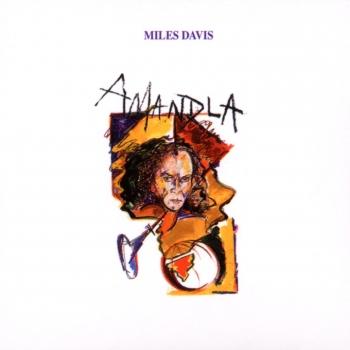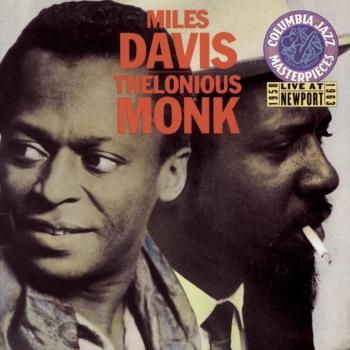
Miles at The Fillmore: Miles Davis 1970: The Bootleg Series, Vol. 3 Miles Davis
Album info
Album-Release:
1970
HRA-Release:
11.07.2015
Album including Album cover
I`m sorry!
Dear HIGHRESAUDIO Visitor,
due to territorial constraints and also different releases dates in each country you currently can`t purchase this album. We are updating our release dates twice a week. So, please feel free to check from time-to-time, if the album is available for your country.
We suggest, that you bookmark the album and use our Short List function.
Thank you for your understanding and patience.
Yours sincerely, HIGHRESAUDIO
- Disc 1: Live at Fillmore East June 17, 1970:
- 1 Introduction 00:04
- 2 Directions 10:24
- 3 The Mask 11:04
- 4 It's About That Time 10:45
- 5 Bitches Brew 13:41
- 6 The Theme 00:36
- 7 Paraphernalia 11:02
- 8 Footprints 11:13
- Disc 2: Live at Fillmore East June 18, 1970:
- 9 Directions 10:10
- 10 The Mask 11:30
- 11 It's About That Time 12:04
- 12 Bitches Brew 11:57
- 13 The Theme 01:30
- 14 Spanish Key (Encore) 10:20
- 15 The Theme (Encore) 00:28
- Disc 3: Live at Fillmore East June 19, 1970:
- 16 Directions 12:50
- 17 The Mask 10:00
- 18 It's About That Time 11:28
- 19 I Fall in Love Too Easily 01:48
- 20 Sanctuary 03:25
- 21 Bitches Brew 12:38
- 22 The Theme 00:38
- 23 Miles Runs the Voodoo Down 13:20
- Disc 4: Live at Fillmore East June 20, 1970:
- 24 Directions 10:48
- 25 The Mask 11:15
- 26 It's About That Time 11:04
- 27 I Fall in Love Too Easily 01:21
- 28 Sanctuary 03:21
- 29 Bitches Brew 09:39
- 30 Willie Nelson 09:22
- 31 The Theme 00:37
Info for Miles at The Fillmore: Miles Davis 1970: The Bootleg Series, Vol. 3
August 1969 to August 1970 was the most productive year of Miles Davis's career: in that short span of time, the trumpeter recorded enough material for his studio double-album Bitches Brew, a studio single album Jack Johnson, three sides of another studio double-album Big Fun, four tracks from the double-album Live-Evil...
... AND, across five nights at Bill Graham's famed Fillmore rock palaces in April and June of 1970, coast-to-coast at both the Fillmore East & West the complete, legendary concerts that will now see the light of day and be made available to fans in their entirety! MILES AT THE FILLMORE Miles Davis 1970: The Bootleg Series Vol. 3.
The searing white heat of these concerts, originally issued in severely edited form to accommodate LP sides, and without any track or song indications (e.g., "Wednesday Miles", "Thursday Miles, etc.") are now made whole. The additional 135 minutes of music in this set include a range spanning Wayne Shorter's Paraphernalia and Footprints from the earlier acoustic repertoire; to an early version of "Miles Runs The Voodoo Down" plus a RARE encore performance of "Spanish Key," compelled by the lightning-fast success of Miles's landmark studio album Bitches Brew.
This unprecedented collection tells a compelling story through its electrifying music, images, and cultural impact! In a rare, in-depth interview for art magazine Zygote II Zygote, which will be reprinted for this set, Miles--while listening to the concert playback--was "so excited about the music that he wanted every set, every note made available to the public..."
The visionary Bill Graham had booked Miles on a bill with The Grateful Dead at the Fillmore West at the April 1970 shows, and with fellow Columbia artist Laura Nyro in June 1970 at the Fillmore East run. The June shows are the earliest documented live performances of Miles s band when he hired two keyboardists--Chick Corea, and Keith Jarrett, who had been added to the band the previous month, along with saxophonist Steve Grossman who had replaced Wayne Shorter in March. The rest of the rhythm section--keyboardist Corea, bassist Dave Holland, drummer Jack DeJohnette and percussionist Airto Moreira--were in the backbone of this band throughout this explosive period.
"Miles Davis' trumpet is very much the focus, and his tone was strong and forceful and could easily cut through the electronic din." (Pitchfork)
Produced by Steve Berkowitz, Michael Cuscuna, Richard Seidel
Digitally remastered
Kaum ein anderer Musiker vermochte die Geschichte des Jazz derart nachhaltig zu beeinflussen, wie der am 26.05.1926 in Alton, Illinois geborene und in St. Louis aufgewachsene Miles Davis. Ohne den 'Prince of Darkness' wären die meisten Schlüsselentwicklungen des Jazz ab 1950 undenkbar gewesen. Mit unnachahmlicher Intonation und sparsamer melodischer Gestaltungskraft hat sich der Trompeter den Status einer Pop-Ikone erspielt.
Seine ersten wichtigen Gehversuche machte Miles in New York, wo er mit seinem musikalischen Vorbild Charlie Parker zusammentraf, in dessen Band er umgehend spielte. 1948 leitete der Trompeter bereits seine eigene Band, die mit Arrangements von Gil Evans zu den 'Birth Of The Cool'-Sessions führte. Neben seinen freelance Arbeiten gründete Miles Davis 1955 sein erstes Quintett bestehend aus Red Garland, Paul Chambers, Philly Joe Jones und John Coltrane. In den Jahren 1963-68 formierte er das zweite große Quintet, in welchem der junge Wayne Shorter am Saxophon brillierte (mit Herbie Hancock, Ron Carter und Tony Williams).
Die späten 60-er Jahre brachten unter Miles' Impuls die Wende hin zum Jazz Rock. Alben wie 'Bitches Brew' und 'We Want Miles' stehen paradigmatisch für diese Zeit. In der ersten Hälfte der 70-er Jahre veränderte der Ausnahmetrompeter häufig die Besetzungen seiner Band. In großzügig angelegten Gruppenimprovisationen integrierte er die vormals 'jazzfremden' Tablas, Sitar und diverse Percussioninstrumente. Den Sound seiner Trompete veränderte er mit dem Einsatz eines WahWah-Pedals. Die psychedelisch anmutende Musik dieser Zeit polarisierte das Publikum, viele Fans des 'frühen Miles' wollten den neuen 'elektrischen' Weg nicht mitvollziehen, doch Davis zielte auf ein junges, experimentierfreudiges Publikum.
Nach längerer Zurückgezogenheit aufgrund von Drogenproblemen kehrte der 'Prince of Darkness' in den frühen 80-er Jahren mit jungen Musikern zurück, seine Band wurde zum Sprungbrett für die wichtigsten Karrieren des aktuellen Jazz. Unter seinen Schülern waren John Scofield, Kenny Garrett, Darryl Jones und Marcus Miller. Der Bassist, Multi-Instrumentalist und Produzent Miller schuf mit Miles Davis die deutlich von der aktuellen Popmusik beeinflußten Spätwerke 'Tutu' und 'Amandla'. Diese Alben zeigen in vollendeten Produktionen das Hit-Potential des Trompeters, der in zahllosen Konzerten dieses Material immer neu als elektrisierender Improvisator präsentierte. Am 28.09.1991 starb der wichtigste Musiker des Jazz wenige Wochen nach seinem letzten Konzert an einer Lungenentzündung. Das posthum veröffentlichte Album 'Doo-Bop' wurde 1992 mit dem Grammy in der Kategorie 'Best R&B Instrumental Performance' ausgezeichnet.
This album contains no booklet.






































